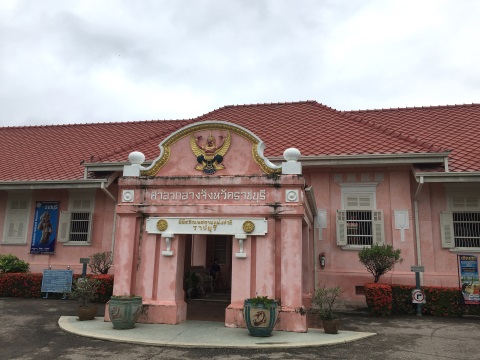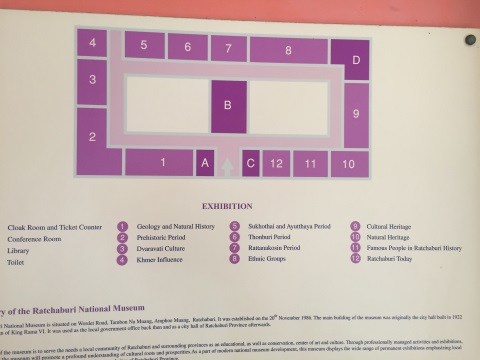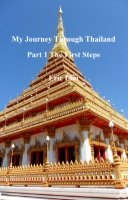| Back to Back Issues Page |
 |
|
Bangkok Travelbug January 2019 Ratchaburi National Museum, Ratchaburi January 11, 2019 |
| Hello
Geology and Natural History Rock and soil structure There are large areas in Ratchaburi with limestone deposits resulting in beautiful limestone caves and a good source of construction material. Similarly, dolomite in the soil also provides good construction material. Feldspar in the granite and laterite soil are Nature's contribution to the ceramic industry in the province and also bricks for construction. Sand in the river bed and wells is another source of construction material. 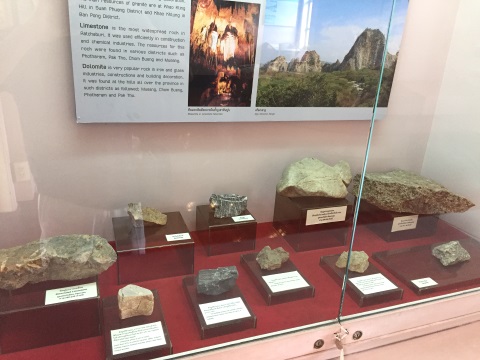
Samples of limestone rock found in Ratchaburi Forests Ratchaburi has a land area of 5,196 sq. km of which 2,606 sq. km or 50 % consists of forest populated with wildlife like tigers, deer and elephants. This feature has resulted in the rich, luxuriant rainforests in the national parks and reserved forest areas. Topography The terrain in Ratchaburi is divided into three zones:
Note: ¹Khwae, meaning tributary, is frequently misspelt and mispronounced in English as kwai or water buffalo. 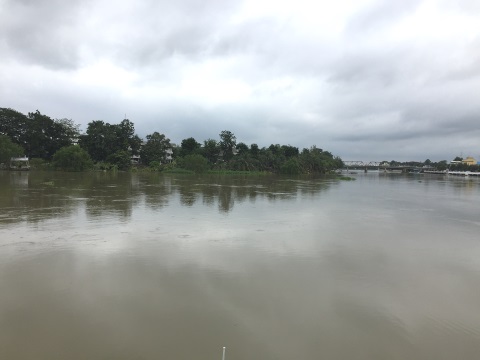
The Mae Klong flowing past Ratchaburi City Pre-historic Period There is evidence of life in Ratchaburi about 12,000 years ago when people mostly hunted for a living. Later from 3,000 to 4,000 years ago, they cultivated the land and reared animals. 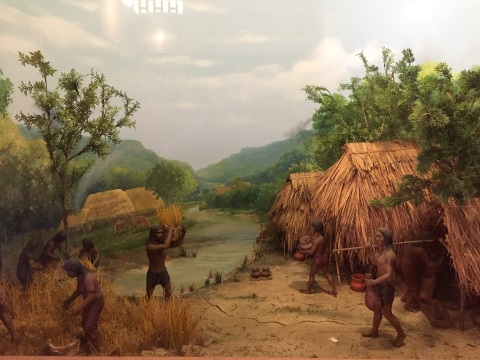
Early man in Ratchaburi The first discovery was made in 1932 by Swiss archaeologist Professor Fritz Sarasin when he found blades used for hunting by prehistoric man. 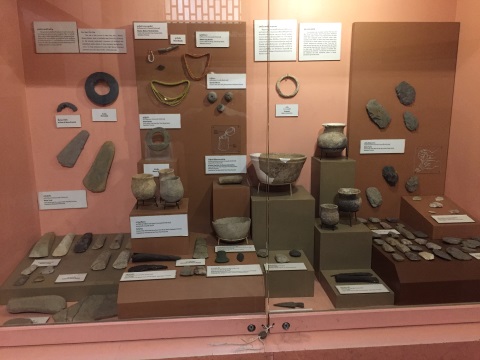
Tools and other items of the prehistoric period In 1966, Danish archaeologist, Per Sorenson discovered the Ban Nong Chae Sao Archaeological Site which provided the first evidence of ancient dwellings in the agricultural period. 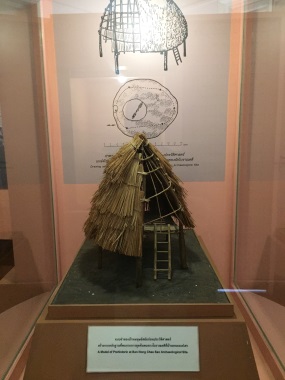
Model of prehistoric dwelling in the Ban Nong Chae Sao Archaeological Site 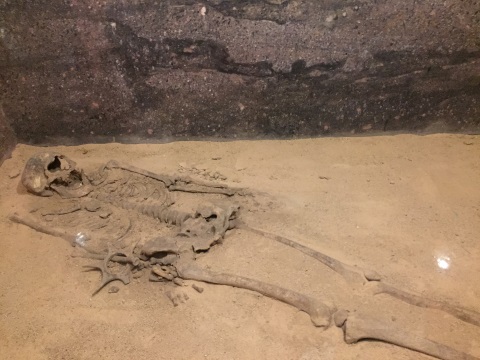
Remains of early man Dvaravati Period During the 6th – 9th C AD, or the Dvaravati Period, a Buddhist civilisation was developed in various parts of old Thailand e.g. Lampang, Lopburi, Nakhon Pathom and Ratchaburi. Evidence of this civilisation is in the Buddha statues, tablets, decorative lintels placed over doorways and temple architecture. The Khu Bua Ancient Town was once a large town in the Dvaravati Period. These are some of the relics found in the old temples and sites in Ratchaburi. 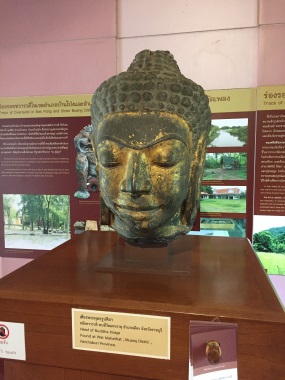
Head of Buddha 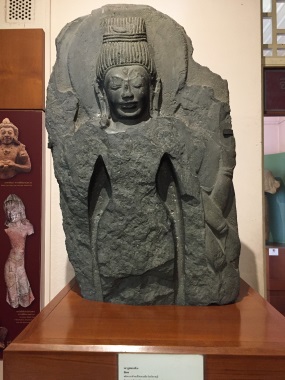
Statue of Siva 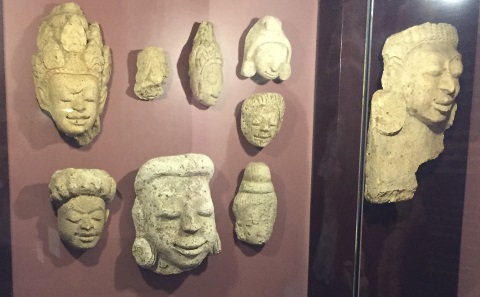
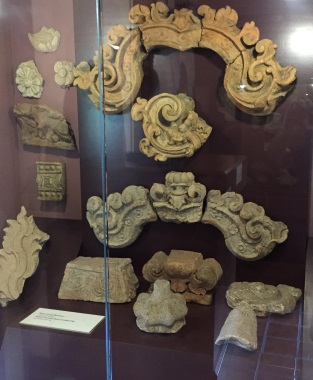
Lintels and other relics from the Dvaravati Period Khmer Period From the 11th – 13th C, the Khmer Empire based in Angkor Wat extended its influence to large parts of north, north-eastern and western Thailand. Evidence of the Khmer Period in Ratchaburi can be found at the site of Kosinarai, an ancient town in Ban Pong District, Ratchaburi. 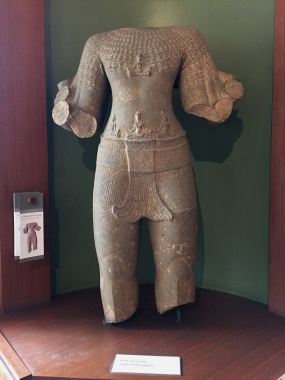
Torso of Bodhisavatta Avalokitesvara² head,arms and feet were missing at the time of discovery Note: ²An enlightened one who postpones enlightenment to help humanity 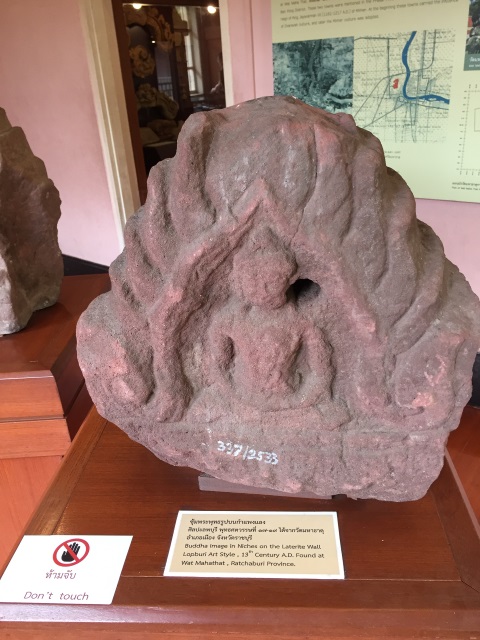
13th C Buddha image found in niche of a wall in Wat Mahathat, Ratchaburi Sukhothai and Ayutthaya Periods During the Sukhothai Period (13th – 15th C) and the Ayutthaya Period (14th – 18th C), the influence and power of these two cities extended to Ratchaburi. Buddha images, sema (boundary stones) and ceramics found in Ratchaburi made in the style during these eras provide the evidence of the extend of this influence. 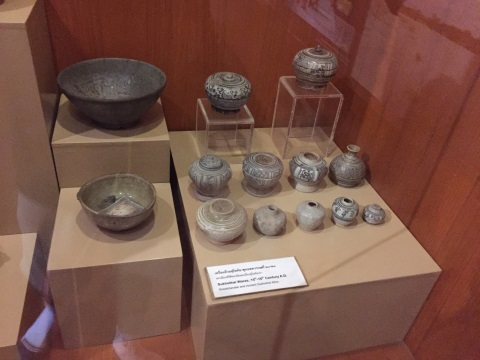
Ceramics from the Sukhothai and Si Satchanalai kilns 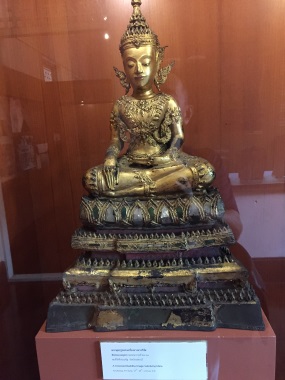
Crowned Buddha image in the Ayutthaya style 17th – 18th C Ratchaburi was also a trading centre with the Mae Klong providing access to the Gulf of Thailand. Chinese ceramics and Sangkalok ceramics from Sukhothai have been found in the river bed in the Mae Klong in Ratchaburi Province. 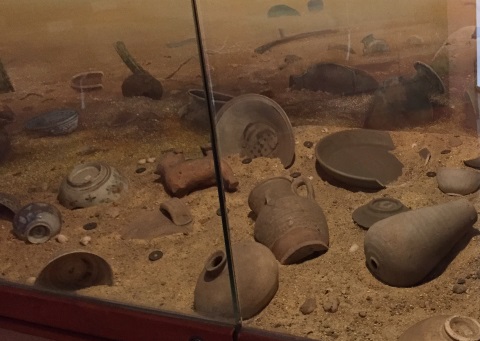
Underwater treasures Thonburi and Rattanakosin Periods Ratchaburi played an important role in the Burmese-Siamese Wars during these two periods. The province is in the path of a major north-westerly approach from Burma to Siam through the Three Pagoda Pass down the Khwae Noi Valley in Kanchanaburi. Furthermore, an approach from the south through Petchaburi passes through Ratchaburi as well. This made Ratchaburi a tactically critical area during these conflicts, fierce battles were fought here to block the Burmese advance to the Central Region. 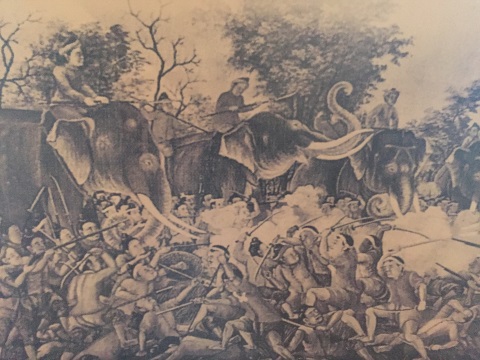
Fighting in the Chao Kwao Barricade in Suan Phueng, Ratchaburi against the Burmese advance during the Thonburi Period (1767 – 1782) 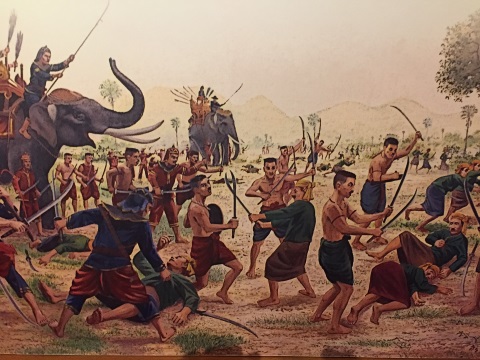
Battle to block the Burmese advance during the Nine-Army Burmese invasion in 1785 in the Rattanakosin Period Ethnic Groups and Cultural Heritage Owing to trade, refugees fleeing war and forced migration after conquests, there are a wide variety of ethnic groups in Ratchaburi; Central Thai, Thai Chinese, Thai Song Dam, Thai Yuan, Thai Mon, Thai Karen, Thai Lao Vieng, Thai Khmer – Lao. 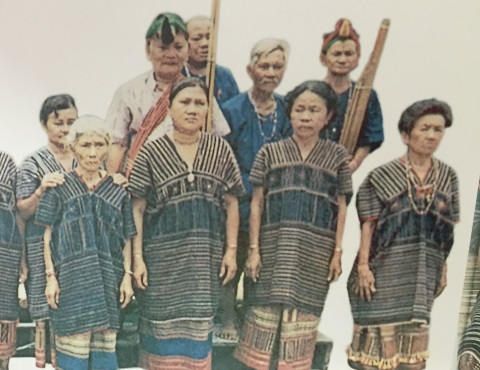
The Karen who migrated from Dawei, Burma 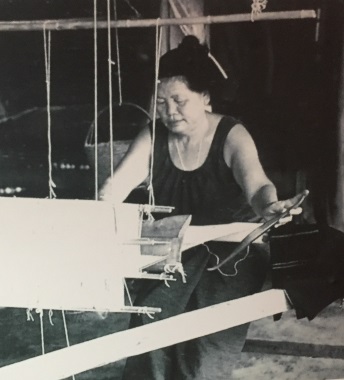
Lao Song or Thai Song Dam migrated in 1779 after the war with Luang Prabang, Laos during the reign of King Taksin Trade with China in the early days brought many Chinese immigrants to Ratchaburi. Their descendants continue as traders and shopkeepers. 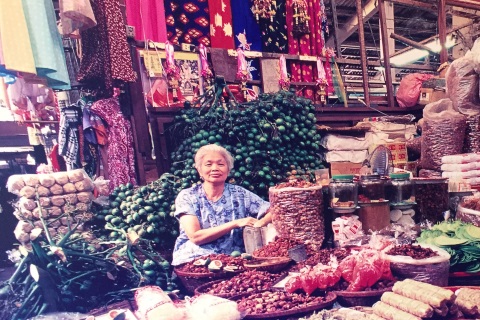
Chinese grocer This wide variety of ethnic groups naturally resulted in a rich cultural heritage reflected colourfully in the handicraft. 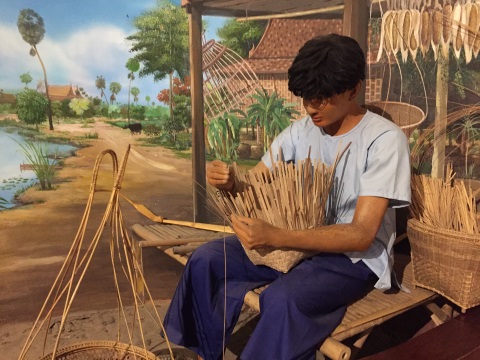
Central Thai custom of Khong Asa, a man preparing his wedding gift for his bride in the form of basketry 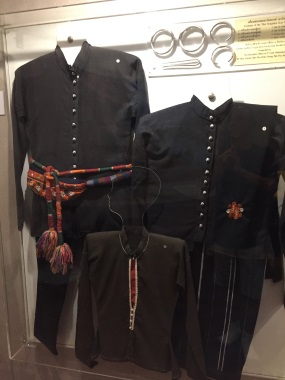
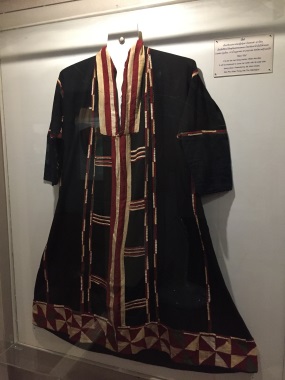
Traditional dress of the Lao Song (top - male),
(bottom - female) 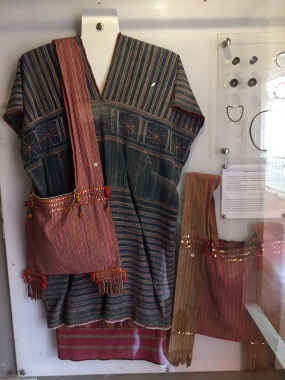
Traditional dress of the Karen Here are some of the handicraft for which Ratchaburi is famous for. Nang Yai or the giant puppet drama is a traditional that is more than 150 years old. The old pieces are preserved in the Nang Yai Museum in Wat Khanon, Photharam, Ratchaburi where there are displays of this drama as well 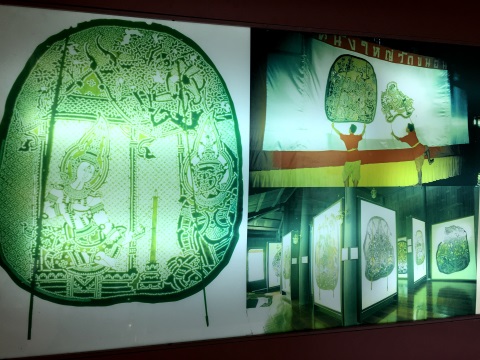
Nang Yai The Thai Yuan are famous for their basketry and woven Yok fabrics 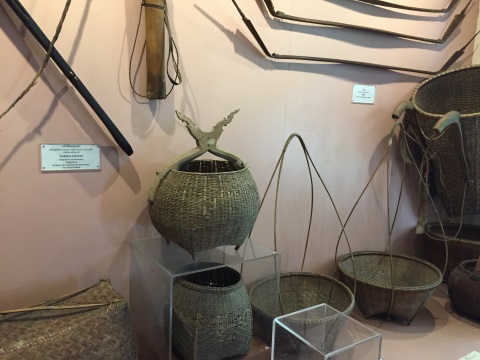
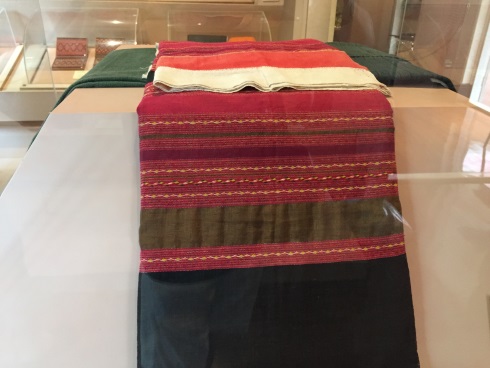
Thai Yuan basketry (top), Yok cloth (bottom) Blessed with suitable soil, Ratchaburi is able to produce beautiful dragon water jars, her signature handicraft product as well as other attractive ceramics. 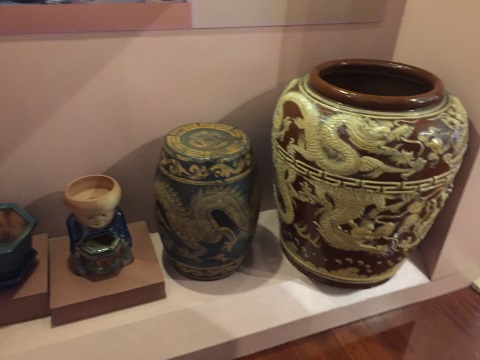
Dragon water jars Natural Heritage The geology of Ratchaburi has endowed the province with a rich natural heritage; the limestone caves with their stalactites and stalagmites, luxuriant rain forests, hot springs and waterfalls. 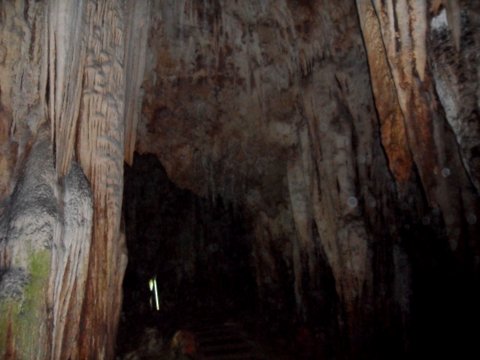
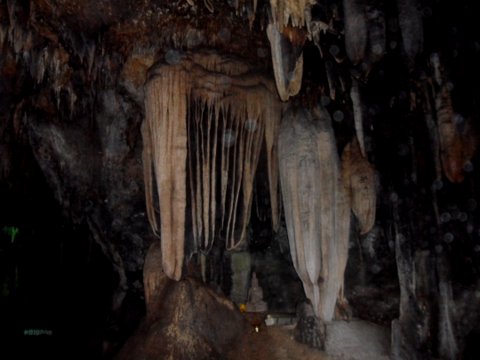
Stalactites in Khao Bin Cave, Ratchaburi 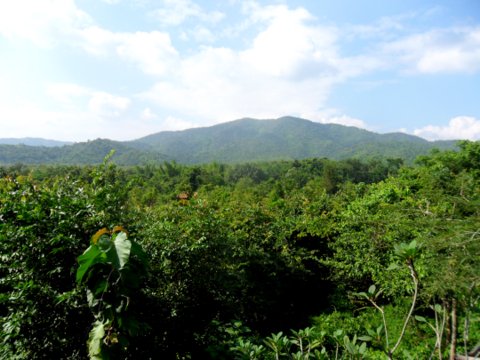
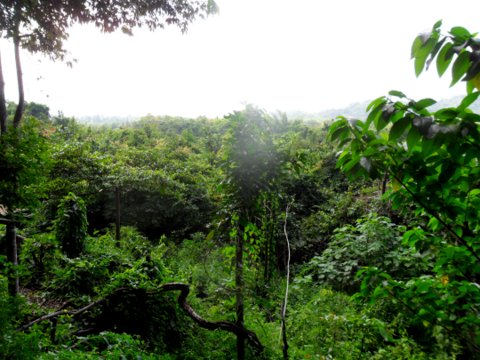
The lush mountains of the Tanaosi Range, Suan Phueng Famous people in Ratchaburi From the list of famous personalities in Ratchaburi, I could only recognise one of them. This is Manas Boonjamnong, a Thai boxer who won a gold medal in the light welterweight division (60 – 64 kg) at the 2004 Athens Summer Olympics. 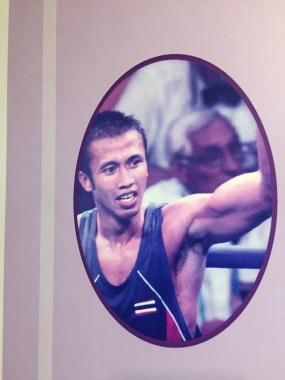
Manas Boonjamnong In the Beijing Summer Olympics in 2008, he took the silver medal for the same weight division. Ratchaburi today Here's something about Ratchaburi that is not mentioned in the museum and not widely known. It's in this humble village railway station of Nong Pladuk, Ban Pong, Ratchaburi. Back then, it was the terminal station for the southern line from Petchaburi and linked to the Thonburi station in Bangkok as well. Up till 1942, the railway from Bangkok going westwards ended here. During World War II, the Japanese launched the Malayan Campaign that ended with the fall of Singapore on 31 January 1942. Following this, the Burma Campaign was launched. From May 1942, prisoners-of-war (POW's) from Singapore were transported by train to Nong Pladuk station. Some remained in Nong Pladuk, others were trucked to various points along the line and to Kanchanaburi. On 16 September 1942, the Japanese Army started the construction of the infamous Death Railway from Nong Pladuk to Kanchanaburi and the Three Pagoda Pass and through to Burma to support the Burma Campaign. 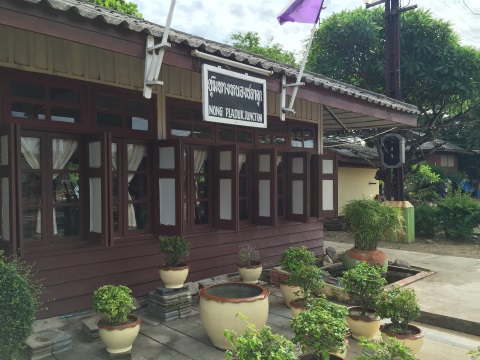
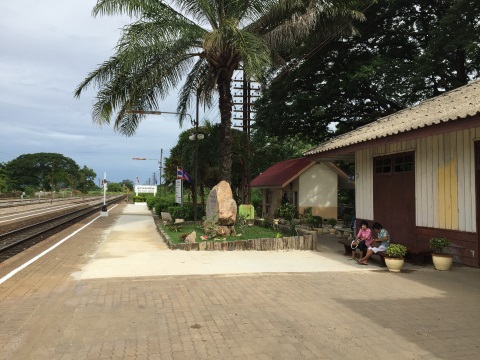
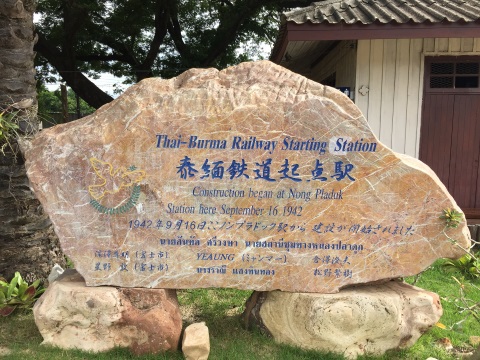
Nong Pladuk Station, Ban Pong, Ratchaburi When the railway was completed, the Allies bombed the railway bridges along the way. They not only bombed the railway bridge at Kanchanaburi, the railway bridge in Ratchaburi City was bombed too. Recently when the Ratchaburi City authorities tried to dredge the Mae Klong Rive near the railway bridge when the water was low, they came across several unexploded Allied bombs in the sandy river bed. The Thai military are still in the process of trying to defuse these bombs without damaging the bridge. The dark shadow of World War II still hangs over some parts of Thailand. Ratchaburi Attractions Here is a list of the places of interest in Ratchaburi, some of which have been mentioned in the museum. Caves in Ratchaburi Nang Yai Museum, Wat Khanon Suan Phueng Map to the Ratchaburi National Museum If the map doesn’t appear, click on this link The major cultural attractions are on the Mae Klong River bank, so we have included some hotels in the vicinity for the convenience of visitors. Address Ratchaburi National Museum 325/1 Woradet Road Tambon Na Muang Amphur Muang Ratchaburi Ratchaburi 70000 Tel: 66 32 321 513 Opening times Open on Wednesdays – Sundays, 0900 – 1600 hours Closed on Mondays and Tuesdays and public holidays Admission Adults: Thai 20 baht, foreigner 100 baht Free admission for monks, novices, students in uniform, members of the civil service. How to get there By car From Bangkok, Phet Kasem Road (highway 4) past Nakhon Pathom and all the way along highway 4 to Ratchaburi. Once you have crossed the mae Klong, turn into Phetkasem Road – Kaow Ngu – Woradet Road. Contents Next month Sgt-Maj Thawee Folk Museum, Phitsanulok If you enjoyed reading this e-zine, please forward it to a friend. If you received this from a friend and found it interesting, please subscribe at Bangkok Travelbug. What do you think of the Bangkok Travelbug? We love to hear from you What other subscribers have said Till next month then. Eric Lim Tour Bangkok Legacies Find us on Facebook My Journey through Thailand Part I The First Steps This is my second e-book and the first in the series of travel journals on my trips to explore the various provinces in Thailand. This edition, which covers my travels from late 2009 to mid-2013, will guide you to historical sites, cultural monuments and exquisite Thai handicraft, across a vast spectrum of cultural and ethnic diversity. You can have a virtual tour with this e-guide book or take the first steps yourself in this journey through Thailand. My Kindle e-book 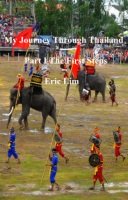
Copyright@2008-2019 Tour Bangkok Legacies All rights reserved |
| Back to Back Issues Page |
